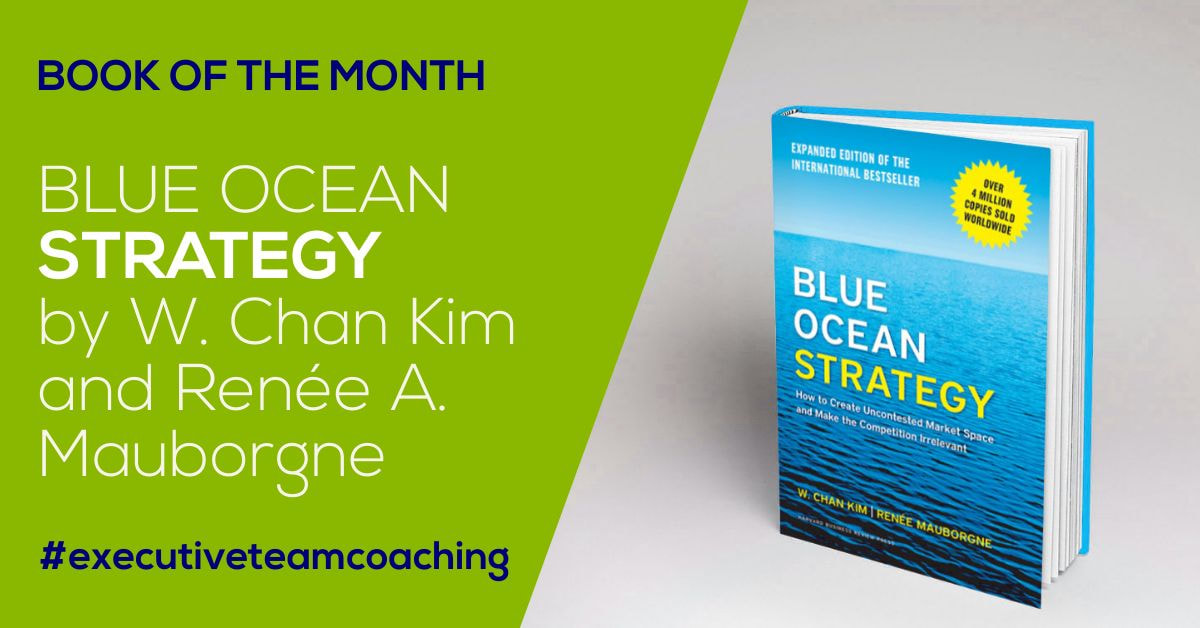|
It’s hard to find a business leader who has not read Jim Collins’ Good to Great. Released 20 years ago, it might just be the most referenced business book of all time (think “get the right people on the bus”).
Collin’s most recent full length book, Great By Choice: Uncertainty, Chaos, and Luck--Why Some Thrive Despite Them All, was written with Morten T. Hansen. It’s received less attention, but packs just as much research-based punch. Building on the lessons from Good to Great, the authors share principles discovered from companies that performed ten times better than their industry average amid a highly unstable business environment. These business resilience principles include:
In a world facing more uncertainty than ever, Great by Choice offers timeless advice for any size company to succeed regardless of the economic environment. With Collin’s sound research approach, it’s advice you can take seriously. Book: 256 pages. Audio book: 8 hours, 45 minutes. Book summary found on Soundview: 4 pages, 18 minute audio. How can your company thrive regardless of circumstance? To find out what you can strengthen to thrive and grow more easily, quickly and profitability, AND enjoy the ride, try our complimentary Agile Growth Checklist. Ths self-service questionnaire takes 5 to 10 minutes to complete. You'll receive the checklist with your responses immediately. Within 24 hours, you'll receive a compiled report highlighting areas to improve. Find out how your company is doing in each of the 7 areas needed to produce more rapid, profitable and sustainable growth. This report is complementary and involves no obligation. In my last 5 Minute Growth Tips article, I compared the eight options for getting outside support to implement the many structures, systems and processes needed to grow profitably and enjoy the ride.
These options might seem overwhelming. And a CEO or business owner might want to throw up their hands and say “I’ll just send my leadership team members on some leadership training. That’ll do the trick.” But, unfortunately, it won’t. An October 2016 HBR article titled “Why Leadership Training Fails - and What to Do About It” reviews decades worth of studies that show leadership training - on its own - does not change leadership behaviours or improve companies’ performance. It also describes the other critical pieces needed first for leadership training to stick and make a difference. Here, I’ll summarize the key points from the article and share some experience of my own. Although companies pour enormous amounts of money into employee training and development - $160 billion in the US in 2015 alone - the learning largely doesn’t improve performance. This is because people soon revert to their old ways of doing things. Why is that? The more obvious reason is that training is a once and done event. There is no follow-up to reinforce the learning. We’ve all experienced this when we’ve taken training with the best of intentions, but then never revisit the material to implement what we learned. The less obvious reason leadership training doesn’t stick is that, once the training is done, leaders go back to a workplace that still operates the way it used to. That workplace has processes, habits and ways of doing things that don’t encourage what the leaders have learned, and often even discourage it. For example, a leader might learn about how to select and clearly define specific priorities to improve things and get better results within their department. But when the leader goes back to the office, their CEO may have a number of internal projects they want to see happen across the company or in certain departments, with little definition or specificity. New projects might also be added regularly, and others inadvertently fall by the wayside. Best case, the leader will have little incentive to select and clearly define priorities because their boss has yet to see the value of doing so. Worst case, the CEO may discourage choosing priorities and see the leader as uncommitted or lacking entrepreneurial grit. Neither scenario encourages the leader to implement what they learned in the training. As a result, performance doesn’t improve. Also, employees below the leaders become cynical about the leadership training because nothing seems to truly change. So, why do CEOs continue to invest in leadership training? There are two reasons. The first is that many CEOs, and leaders generally, tend to view companies as just groups of people. The thinking goes “if everyone in the company learns and grows, they’ll each get better at what they do, and the company will perform better.” The same view is common for executive and leadership team performance. Develop the individual leaders, and the team and company will do better. But this just isn’t true. A number of studies have shown that company performance results from not just individual skills and abilities, but, more so, from the systems in which people work. Building on the HBR article, my experience has been that these systems fall into five areas:
From this view, leaders’ individual skills and abilities make up less than one fifth of the key ingredients needed to improve a company’s performance. Also, we can imagine how the structures, processes and policies already happening in the company will enable or limit the leaders’ freedom to practice the skills they learn in training. The second reason CEOs continue to invest in pure leadership training is that noone has ever had the courage to challenge them with the uncomfortable truth that the way they lead and manage their team and company, in terms of direction, structure, processes, communication and resources, is the larger reason their company hasn’t gotten to where they want it to be. As the HBR article puts it “those are the things to fix before training can succeed longer-term.” And so, how can CEOs and business owners get these systems working better? I would share similar advice to that given in the HBR article, although slightly adjusted for growth-minded mid-size companies:
This approach will ensure the right systems are in place and working to support the leadership learning that takes place as a part of it all. At this point in the article, a CEO or business owner might be considering simply attending leadership training with their leadership team members. That way, the CEO can learn the same best practices, implement them and create an environment that encourages the behaviours their leaders will have learned. That’s certainly an option. This takes CEOs back to the first problem mentioned with leadership training… there’s no follow up to ensure the best practices are implemented. And that’s made more difficult by some of the features of most leadership training programs:
At the end of the day, leadership training has the CEO back to taking a Do-It-Yourself approach. And we’ve already discussed how a DIY approach slows growth. So, how can a CEO and their leadership team successfully learn and fully implement the systems and skills to grow profitably? This takes us back to the 8 options we covered in my last 5 Minute Growth Tips article. And what we find is that the most effective option to make this happen is a Business Growth Advisor and Leadership Team Coach. If Leadership Team Coaching seems like it might be the right option for you, the next question is are you the right fit for a Leadership Team Coach? We’ll cover that in my next 5 Minute Growth Tip article. How can you implement the systems to grow a thriving company? To find out what systems to strengthen to grow more easily, quickly and profitability, AND enjoy the ride, try our complimentary Agile Growth Checklist. This self-service questionnaire takes 5 to 10 minutes to complete. You'll receive the checklist with your responses immediately. Within 24 hours, you'll receive a compiled report highlighting areas to improve. Find out how your company is doing in each of the 7 areas needed to produce more rapid, profitable and sustainable growth. This report is complementary and involves no obligation. It’s often worthwhile for CEOs and executive teams of mid-size companies to take a hard look at ways to directly and quickly improve profitability and cash flow. This can complement the more proactive and holistic performance enhancing work they need to do on their strategy, people and execution. However, we find this is an area many CEOs and their teams want to hand off to their CFO or controller. In reality, this is the work that every leader and manager in the company needs to do. Because that’s who actually drives revenue increases, efficiency gains and cost reductions in the operation. In this Gravitas Impact Premium Coaches podcast, my colleague and author Jeff Redmon, in Wisconsin, shares case studies of how CEOs and their teams increased cash flow and profitability throughout their organizations. Subscribe to Gravitas Impact podcast: Android
How can you improve profitability and cash flow in your company? To find out how to increase profit and cash to to grow more easily, quickly and profitability, AND enjoy the ride, try our complimentary Agile Growth Checklist. This self-service questionnaire takes 5 to 10 minutes to complete. You'll receive the checklist with your responses immediately. Within 24 hours, you'll receive a compiled report highlighting areas to improve. Complete section 5 to check your profit and cash flow improvement processes. Or complete all 7 sections to find out how your company is doing in each of the 7 areas needed to produce more rapid, profitable and sustainable growth. This report is complementary and involves no obligation. In 2010, while I was working at Concentra Financial, the late Myrna Bentley, then CEO, caught me in the elevator one day after an executive team strategic planning session I had led, and gave me a surprise gift: the book Blue Ocean Strategy.
It was just one of the many examples of Myrna’s generosity that I witnessed there. And the book ended up having a big influence on my work with many companies. Written by W. Chan Kim and Renée Mauborgne, the Blue Ocean Strategy approach suggests that a business’ current market is often a bloody ocean, where competitors fight to the death for the same limited set of customers. The authors describe how to, instead, open up a significant “blue ocean” where competitors have yet to appear. The book describes structured ways to look for opportunities to fulfil the unmet needs and preferences of non-customers – those who aren’t buying from us or our competitors – opening up a whole new market. For my clients, the approach has also been helpful for finding a profitable niche within their current market and clarifying their competitive strategy to best meet the needs of that niche. It has also helped reduce costs by identifying and eliminating features customers don’t really value. I am grateful to Myrna, and all my other mentors, for the models and best practices they’ve shared with me over the years, including Blue Ocean Strategy. Book: 216 pages. Audio book: 6 hours. Soundview summary: 4 pages, 16 minute audio. GetAbstract summary: 5 pages, 10 minute audio. How can you improve your competitive strategy? To find out what you can improve in your competitive strategy to grow more easily, quickly and profitability, AND enjoy the ride, try our complimentary Agile Growth Checklist. This self-service questionnaire takes 5 to 10 minutes to complete. You'll receive the checklist with your responses immediately. Within 24 hours, you'll receive a compiled report highlighting areas to improve. Complete sections 3 and 6 to check your competitive strategy. Or complete all 7 sections to find out how your company is doing in each of the areas needed to produce more rapid, profitable and sustainable growth. This report is complementary and involves no obligation. |
Archives
December 2029
Categories
All
|





 RSS Feed
RSS Feed
